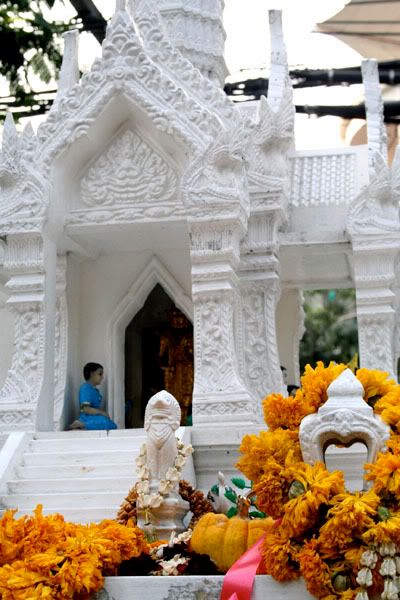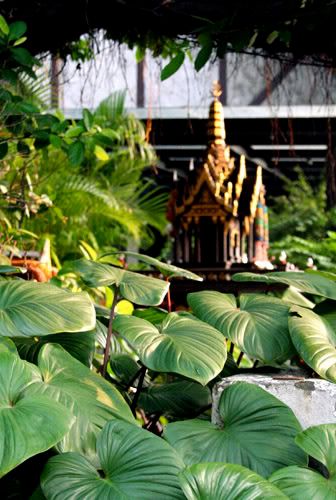Considering that pomelo is a relatively Asian specific fruit, I was a little surprised to see it marketed as a flavor for an international soda. Primarily for that reason, I picked up a bottle. The product itself wasn't terribly impressive: not particularly evocative of a pomelo's flavor, and marked by the slight sugary sliminess of regular Sprite. But at the very least, it had me thinking about the intersections between consumerism and globalization. On one hand, the fact that this Sprite is pomelo flavored is a comforting sign that even in the face of international trends and dictates of taste, regional communities are able to assert their own tastes to the degree that an international corporation would develop a unique product as a response. On the other hand, is this just a clever tactic for an international corporation to expand its global economic territory?
Showing posts with label globalization. Show all posts
Showing posts with label globalization. Show all posts
Tuesday, July 15, 2008
Taiwan Treats: Pomelo Sprite.
Considering that pomelo is a relatively Asian specific fruit, I was a little surprised to see it marketed as a flavor for an international soda. Primarily for that reason, I picked up a bottle. The product itself wasn't terribly impressive: not particularly evocative of a pomelo's flavor, and marked by the slight sugary sliminess of regular Sprite. But at the very least, it had me thinking about the intersections between consumerism and globalization. On one hand, the fact that this Sprite is pomelo flavored is a comforting sign that even in the face of international trends and dictates of taste, regional communities are able to assert their own tastes to the degree that an international corporation would develop a unique product as a response. On the other hand, is this just a clever tactic for an international corporation to expand its global economic territory?
Themes:
East Asia,
food,
globalization,
Taiwan,
Taiwan food and coffee,
Taiwan treats
Wednesday, February 20, 2008
Coca-Cola Spirit House; Conclusion to Gods and Spirits of Thong Lo
 After I started the series on the gods and spirits of Thong Lo, I realized that it was in part a way of working out some thoughts about modernity and globalization in Thailand. It's a topic that's been on my mind recently, but it's something I've been thinking about for years, since I first learned of spirit-houses.
After I started the series on the gods and spirits of Thong Lo, I realized that it was in part a way of working out some thoughts about modernity and globalization in Thailand. It's a topic that's been on my mind recently, but it's something I've been thinking about for years, since I first learned of spirit-houses.I first became familiar with them during college, while living in Los Angeles. I ate out infrequently in Thai Town, a nondescript area of Hollywood with a lot of hole-in-the-wall Thai restaurants. Some of the grander properties had shrines out front: small but beautiful Thai-style houses, laden with fresh fruit and draped in flowers.
In 2003, I was assigned a sculpture project on pattern making. Since I had no experience with sewing patterns, I opted to go for something architectural. For some reason, my mind turned back to the elaborate shrines I had seen in Thai Town. I researched them, and learned that they were called spirit-houses: miniature homes meant to provide a refuge for spirits that were displaced when people developed land. People tend the houses, offering food and drink to the spirits that reside within. I read that spirit-houses used to be made mostly out of wood, but as development in Southeast Asia exploded and the forests thinned, they were increasingly being made out of concrete. The connections between ideas of displacement, modernization, and loss of tradition intrigued me. For my sculpture project, I built a spirit-house out of used cardboard. It was a Coca-Cola spirit house, with red and white soda-pop tiles dripping over a cardboard frame.
 Recently, I read an interview with an Australian photographer about his work in Thailand. The photographer complained about Bangkok, how he had come looking for the exotic, and found a city just like every other. He lamented the loss of tradition, which he saw as the result of consumption and consumerism. He felt that soon Thai culture would disappear completely in the face of Western influence. While I too have nostalgic feelings about the loss of traditional cultures, and understand that hegemonic forms of globalization are troubling, his comments annoyed me. In part, I simply disagree with him about Bangkok; it's an extraordinary city that is just as unique as it is global. Beyond that, I think that it's a colonizing gesture to look at an 'exotic' culture, and wish for it to remain 'traditional'- while he likely doesn't expect the same of his own. But most strikingly, I found his suggestion that Thai culture is something static, able to be bulldozed in place of something new, to be completely incorrect. Thai culture (like most cultures) is inherently dynamic. Part of what makes Thai culture so vibrant is the degree to which it is a result of the merging of different cultures. Thai cuisine, which seems so distinct, is largely the collision of local, Khmer, Chinese, Indian, and even Portuguese (in the desserts, anyway) influences. Globalization isn't something that's going to wipe out Thai culture- it's what's gave birth to Thai culture in the first place.
Recently, I read an interview with an Australian photographer about his work in Thailand. The photographer complained about Bangkok, how he had come looking for the exotic, and found a city just like every other. He lamented the loss of tradition, which he saw as the result of consumption and consumerism. He felt that soon Thai culture would disappear completely in the face of Western influence. While I too have nostalgic feelings about the loss of traditional cultures, and understand that hegemonic forms of globalization are troubling, his comments annoyed me. In part, I simply disagree with him about Bangkok; it's an extraordinary city that is just as unique as it is global. Beyond that, I think that it's a colonizing gesture to look at an 'exotic' culture, and wish for it to remain 'traditional'- while he likely doesn't expect the same of his own. But most strikingly, I found his suggestion that Thai culture is something static, able to be bulldozed in place of something new, to be completely incorrect. Thai culture (like most cultures) is inherently dynamic. Part of what makes Thai culture so vibrant is the degree to which it is a result of the merging of different cultures. Thai cuisine, which seems so distinct, is largely the collision of local, Khmer, Chinese, Indian, and even Portuguese (in the desserts, anyway) influences. Globalization isn't something that's going to wipe out Thai culture- it's what's gave birth to Thai culture in the first place. The spirit-houses themselves are actually a great symbol of resilience. Buddhism is, after all, a foreign import- and the spirit-houses that link back to older traditions managed to survive. Thong Lo is one of the city's youngest, hippest, most moneyed streets in Bangkok- and yet people still create spaces for gods and spirits among the luxury condos and cutting-edge shopping malls. The spirits of Thong Lo don't linger as relics of a 'traditional' past, but thrive as living forces in the lives of modern people. And really, aren't spirit-houses about making way for something new while not losing touch with the old?
The spirit-houses themselves are actually a great symbol of resilience. Buddhism is, after all, a foreign import- and the spirit-houses that link back to older traditions managed to survive. Thong Lo is one of the city's youngest, hippest, most moneyed streets in Bangkok- and yet people still create spaces for gods and spirits among the luxury condos and cutting-edge shopping malls. The spirits of Thong Lo don't linger as relics of a 'traditional' past, but thrive as living forces in the lives of modern people. And really, aren't spirit-houses about making way for something new while not losing touch with the old?In the end, my thoughts came back to the spirit-house that I had made nearly five years ago. I don't think I fully understood what I meant when I created that Coca Cola spirit-house, but perhaps I know better now. I had made the spirit house out of non-traditional elements, out of ugliness. I thought it might be an indictment against modernization, but in the end, it was a beautiful object, with lush red and green tiles glistening over an ornate corrugated frame. The beauty of my recycled spirit-house had a meaning I hadn't intended. The materials and tastes of a culture may change, but isn't it possible that the spirit stays the same?
Themes:
Bangkok,
essays,
globalization,
Los Angeles,
Thailand
Subscribe to:
Posts (Atom)
